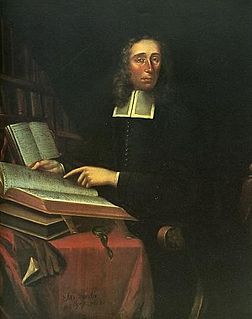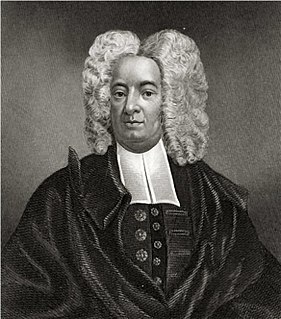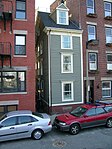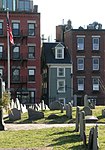
The Leonard P. Zakim Bunker Hill Memorial Bridge is a cable-stayed bridge across the Charles River in Boston, Massachusetts. It is a replacement for the Charlestown High Bridge, an older truss bridge constructed in the 1950s. Of ten lanes, using the harp-style system of nearly-parallel cable layout, coupled with the use of "cradles" through each pylon for the cables, the main portion of the Zakim Bridge carries four lanes each way of the Interstate 93 and U.S. Route 1 concurrency between the Thomas P. "Tip" O'Neill Jr. Tunnel and the elevated highway to the north. Two additional lanes are cantilevered outside the cables, which carry northbound traffic from the Sumner Tunnel and North End on-ramp. These lanes merge with the main highway north of the bridge. I-93 heads toward New Hampshire as the "Northern Expressway", and US 1 splits from the Interstate and travels northeast toward Massachusetts' North Shore communities, crossing the Mystic River via the Tobin Bridge.
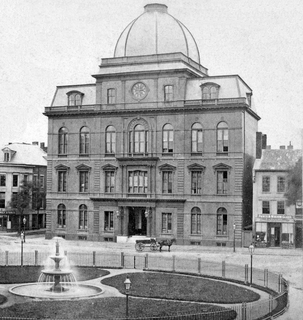
Charlestown is the oldest neighborhood within the city of Boston, Massachusetts, United States. Originally called Mishawum by the Massachusett tribe, it is located on a peninsula north of the Charles River, across from downtown Boston, and also adjoins the Mystic River and Boston Harbor waterways. Charlestown was laid out in 1629 by engineer Thomas Graves, one of its earliest settlers, in the reign of Charles I of England. It was originally a separate town and the first capital of the Massachusetts Bay Colony.

The Charlestown High Bridge, spanned the Charles River in Boston, Massachusetts, and was part of I-93/US 1 at the north end of the Central Artery.

The North End is a neighborhood of Boston, Massachusetts, United States. It has the distinction of being the city's oldest residential community, where people have continuously inhabited since it was settled in the 1630s. Though small, only 0.36 square miles (0.93 km2), the neighborhood has nearly one hundred establishments and a variety of tourist attractions. It is known for its Italian American population and fine Italian restaurants. The district is a pending Boston Landmark.
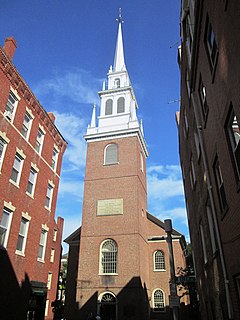
Old North Church, at 193 Salem Street, in the North End, Boston, is the location from which the famous "One if by land, two if by sea" signal is said to have been sent. This phrase is related to Paul Revere's midnight ride, of April 18, 1775, which preceded the Battles of Lexington and Concord during the American Revolution.

The Granary Burying Ground in Massachusetts is the city of Boston's third-oldest cemetery, founded in 1660 and located on Tremont Street. It is the final resting place for many notable Revolutionary War-era patriots, including Paul Revere, the five victims of the Boston Massacre, and three signers of the Declaration of Independence: Samuel Adams, John Hancock, and Robert Treat Paine. The cemetery has 2,345 grave-markers, but historians estimate that as many as 5,000 people are buried in it. The cemetery is adjacent to Park Street Church and immediately across from Suffolk University Law School.

The Bunker Hill Monument was erected to commemorate the Battle of Bunker Hill, which was among the first major battles between British and Patriot forces in the American Revolutionary War, fought there June 17, 1775. The 221-foot granite obelisk was erected between 1825 and 1843 in Charlestown, Massachusetts, with granite from nearby Quincy conveyed to the site via the purpose-built Granite Railway, followed by a trip by barge. There are 294 steps to the top.

The Boston National Historical Park is an association of sites that showcase Boston's role in the American Revolution. It was designated a national park on October 1, 1974. Seven of the eight sites are connected by the Freedom Trail, a walking tour of downtown Boston. All eight properties are National Historic Landmarks.

Miguel Rosales is president and principal designer of Rosales + Partners, a transportation architecture and bridge design firm based in Boston, Massachusetts. He is an architect specialized in bridge aesthetics and design, with more than 30 years of experience in urban design and bridge architecture. Some examples of these bridges include; Phyllis J. Tilley Memorial Bridge, Christina and John Markey Memorial Pedestrian Bridge, and Liberty Bridge at Falls Park on the Reedy River.

The Charlestown Bridge, officially named the North Washington Street Bridge, is located in Boston and spans the Charles River. As the river's easternmost crossing, the bridge connects the neighborhoods of Charlestown and the North End. Completed in 1900 and given its current official name in 1910, the bridge carries a portion of the Freedom Trail linking to the USS Constitution and Bunker Hill. To the north of the bridge, Route 99 begins and the street becomes New Rutherford Avenue.

The Leverett Circle Connector Bridge is a highway bridge over the Charles River, carrying two lanes each of northbound and southbound traffic. It connects to Interstate 93 in Somerville, Massachusetts at the north end and splits at the south end, providing direct access to both Storrow Drive and Leverett Circle in Boston. Going northbound, there is also a fork which provides access to the City Square Tunnel under Charlestown to proceed on U.S. 1 North via the Tobin Bridge.

Edmund Hartt was a master carpenter and owned the shipyard in Boston, Massachusetts where USS Constitution was constructed in 1797. The shipyard was located in the North End of Boston, near the location of the present Coast Guard base. He also built USS Boston (1799), USS Argus (1803), and USS Independence (1814).

The Skinny House at 44 Hull Street in the North End of Boston, Massachusetts, USA, is an extremely narrow four-story house reported by the Boston Globe as having the "uncontested distinction of being the narrowest house in Boston." According to the executive director of the Boston Landmarks Commission, "In a city where there are many narrow lots, this far exceeds the norm. ... As far as we know, it is the narrowest house in Boston." It was originally built as a spite house.

The Charles River Dam is a flood control structure on the Charles River in Boston, Massachusetts, located just downstream of the Leonard P. Zakim Bunker Hill Memorial Bridge, near Lovejoy Wharf, on the former location of the Warren Bridge.

Boston Harborwalk is a public walkway that follows the edge of piers, wharves, beaches, and shoreline around Boston Harbor. When fully completed it will extend a distance of 47 miles (76 km) from East Boston to the Neponset River.
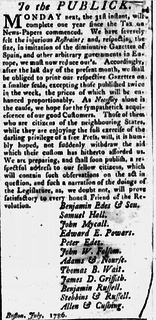
Benjamin Edes was a journalist and political agitator. He is best known, along with John Gill, as the publisher of the Boston Gazette, a newspaper which sparked and financed the Boston Tea Party and was influential during the American Revolutionary War.

Paul Revere Park is a 5-acre (2.0 ha) park located on the Charles River in Charlestown, Massachusetts. The park was the first park to open along the "Lost Half Mile" of the Charles River as mitigation for the taking of planned parkland for the construction of the Big Dig. The park runs along the Charles River between the Freedom Trail on North Washington Street and the Leonard P. Zakim Bunker Hill Memorial Bridge. The park features a large oval-shaped lawn, an informal performance area, and a playground.







